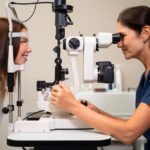Cervical cancer is a significant health concern affecting women worldwide, but understanding its risk factors is crucial for prevention, early detection, and effective management. While cervical cancer is largely preventable through vaccination against HPV (Human Papillomavirus) and regular screenings such as Pap smears, it’s essential to recognize the various factors that can increase a woman’s likelihood of developing this disease. Here, we delve into eight key risk factors associated with cervical cancer:
HPV Infection:
Human Papillomavirus (HPV) is the primary risk factor for cervical cancer. Certain strains of HPV, particularly HPV 16 and 18, are known to cause most cases of cervical cancer. HPV is a sexually transmitted infection, and women who have had multiple sexual partners or early sexual activity are at higher risk of HPV infection.
Smoking:
Tobacco use has been strongly linked to an increased risk of cervical cancer. Smoking not only weakens the immune system, making it harder for the body to fight off HPV infections, but it also promotes the development of precancerous changes in cervical cells.
Weak Immune System:
Individuals with weakened immune systems, such as those living with HIV/AIDS or undergoing immunosuppressive therapy following organ transplantation, are at higher risk of developing cervical cancer. A compromised immune system is less effective at clearing HPV infections, allowing them to persist and progress to cervical cancer.
Long-Term Use of Oral Contraceptives:
Some studies suggest that long-term use of oral contraceptives (birth control pills) may slightly increase the risk of cervical cancer. However, the risk returns to normal once women stop taking the pill.
Multiple Full-Term Pregnancies:
Women who have had multiple full-term pregnancies, especially those with many children, may have an increased risk of cervical cancer. The exact reason for this association is not fully understood, but it may be related to hormonal changes or damage to cervical cells during childbirth.
Family History of Cervical Cancer:
Having a first-degree relative (mother, sister, or daughter) who has been diagnosed with cervical cancer increases a woman’s risk of developing the disease. This suggests a possible genetic predisposition to cervical cancer, although environmental factors may also play a role.
Lack of Regular Pap Smears:
Regular Pap smears (Pap tests) are essential for detecting precancerous changes in the cervix early, allowing for timely intervention and prevention of cervical cancer. Women who do not undergo regular screening are at higher risk of developing advanced-stage cervical cancer, as it may go undetected until symptoms appear.
Low Socioeconomic Status:
Women from disadvantaged socioeconomic backgrounds, including those with limited access to healthcare services and education, are at higher risk of developing cervical cancer. Factors such as inadequate screening, delayed diagnosis, and limited access to HPV vaccination contribute to increased cervical cancer incidence and mortality rates in these populations.
While cervical cancer is a serious disease, understanding its risk factors empowers women to take proactive steps to reduce their risk. By practicing safe sex, quitting smoking, maintaining a healthy lifestyle, and undergoing regular screenings, women can significantly lower their chances of developing cervical cancer. Additionally, widespread HPV vaccination can help prevent the majority of cervical cancer cases. By addressing these risk factors and promoting awareness, we can work towards a future where cervical cancer becomes a rarity rather than a reality for women worldwide.
Image credits : Image by Freepik








No Comment! Be the first one.